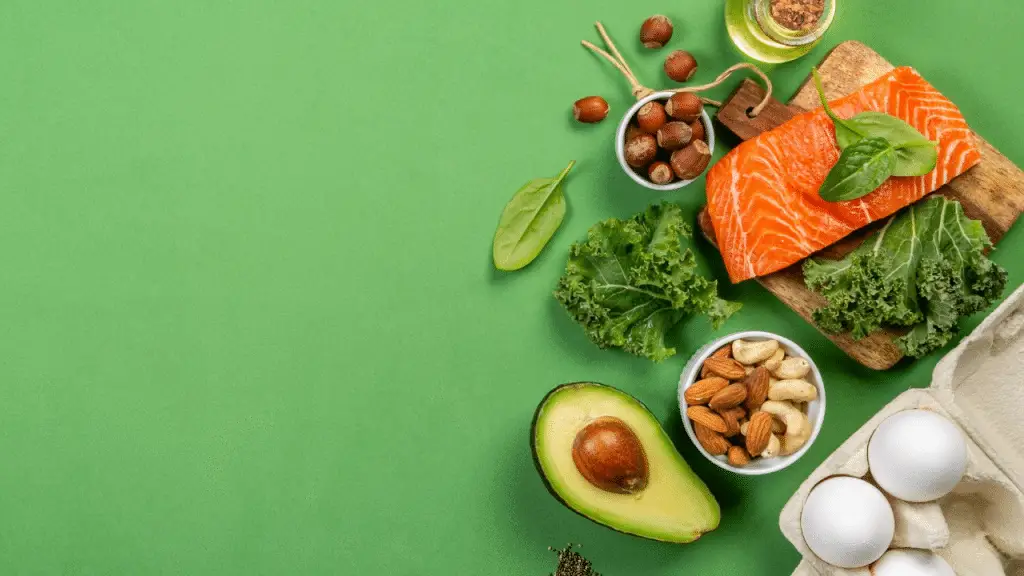If you are familiar with my blog, you know that, as a general rule, I promote a moderate amount of carbs for women or, at least, cycles with a moderate amount of carbs. That’s why I wrote Intermittent Fasting Without Keto: Why It Works. Today, I want to spend more time helping you decide if you should practice intermittent fasting with or without keto. First, I will explain how intermittent fasting works to help you reach your health goals. Once you understand that, we can review when intermittent fasting with keto will be most beneficial and when you should consider intermittent fasting without keto.
How Intermittent Fasting Works
I often talk about the benefits of intermittent fasting and how it helps you reach your health goals. Sometimes, I talk about insulin. Other times, the benefits of the stress of not eating or how your body can focus on healing when it’s not digesting food. There are many different ways fasting contributes to healing and weight loss. Today, I will spend more time helping you understand metabolic flexibility.
The Role of Metabolic Flexibility
I simple terms, metabolic flexibility is your body’s ability to go in and out of ketosis and adapt to changes in fuel sources and food availability. It can also refer to your body’s ability to switch from a resting state to an active state, no matter what fuel sources are available.
By the way, don’t forget to sign up for my Intermittent Fasting 101 Workshop!

From Fasting to Feeding
Metabolic flexibility does go hand in hand with insulin sensitivity. When you fast, your body doesn’t have to produce insulin, which means that gradually, as you fast more often or longer, your body will become more sensitive to the insulin it produces when you do eat. Besides insulin sensitivity, there is also a change of fuel source that occurs when you fast. As your body runs out of glycogen (the process of using glycogen is called “glucose oxidation“), it will start using fat stores to produce ketones. This is called “fatty acid oxidation.” The same thing happens when you do the keto diet. Your body runs out of glycogen and produces ketones through fatty acid oxidation.
From Rest to Exercise
A similar situation occurs when you increase energy demand through exercise. Depending on the intensity of the exercise and the glycogen available in your muscle, your body may have to resort to fatty acid oxidation.
Fuel Metabolism Changes Based on Activity
This image demonstrates how eating increases glycogen storage and glucose oxidation but reduces fatty acid oxidation. In a fasted state, fatty acid oxidation increases, which means you use ketones for energy. If you fast long enough, you will officially be in ketosis (if you measure your ketone levels, it means at least 0.5 mmol/L). Any activity increases glucose oxidation, decreases glycogen storage, and increases fatty acid oxidation.

Benefits of Ketogenesis
The process of ketogenesis is mostly regulated by insulin. As your body runs out of glycogen through fasting (or when you decrease carbohydrate consumption and increase the presence of fatty acids, such as with the keto diet), your body produces ketones through fatty acid oxidation. This process is called ketogenesis. Ketone bodies have the following benefits:
- Food for your brain: Up to 70% of your brain can use ketones for fuel. The keto diet has been used to treat epilepsy, Alzheimer’s’ disease, and Parkinson’s disease. It can improve brain function, and memory, and reduce migraine headaches.
- Weight loss: Fewer cravings and less appetite contribute to weight loss.
- Cancer prevention: The absence of glucose may help starve cancer cells.
- Improvement of acne: It turns out that ketogenesis can help improve the health of your skin.
Reaching these benefits through intermittent fasting is possible without the keto diet. The question is: Should you practice intermittent fasting with keto, or should you not follow the keto diet? Let’s talk about it.

How to Decide If You Should Practice Intermittent Fasting With Keto
Deciding whether to practice intermittent fasting with keto will have a lot to do with your level of experience with fasting, your health goals, and your gender.
Your Fasting Experience
If you are a fasting newbie, you may find starting the keto diet very beneficial. Transitioning to the keto diet will help you become more metabolically flexible without having to go hungry. It will make fasting a lot easier. Another option is to go on a modified fast. You could even do both! Start with a modified fast and do the keto diet for a week or so after your modified fast.
What is a Modified Fast?
The concept of a modified fast is based on the Fasting Mimicking Diet. The Fasting Mimicking Diet by Dr. Valter Long helps you benefit from prolonged fasting while eating some whole foods. A modified fast takes advantage of a short-term severe calorie restriction (you would eat about 40-50% of your regular calorie intake) and a low protein (9-10% of your macros), high-fat vegan diet (around 45% of your macros) to promote healing. Learn more about modified fasting by reading my post Modified Fasting: How You Can Benefit From Fasting Without Giving Up Food.
Fasting Experts
If you are comfortable with fasting, you don’t need to practice intermittent fasting with keto. It doesn’t mean you shouldn’t, but you will be able to fast long enough to achieve ketosis without the keto diet. Once you have been in ketosis, it is easier to get back into it. With experience, you will notice that fasting for 14-16 hours a day is all you need. To remain in ketosis longer, you can fast longer depending on how you feel. Some days I fast for 16 hours, and others for 22 hours. With experience, I have been able to gauge the most beneficial fasting period by paying attention to my energy level, focus, and hunger signals.
Your Health Goals
I mentioned the benefits of ketogenesis (or ketosis) already. Deciding whether to practice intermittent fasting with keto will depend greatly on which benefits you are after. If you want weight loss, you can simply fast long enough to achieve ketosis for a time (I would recommend at least 18-20 hours each day). If you are after more serious therapeutic effects like the treatment of a disease like cancer or Parkinson, then doing intermittent fasting with keto would be beneficial, at least until the disease is under control.
Your Gender
Women need carbs to support their hormonal function. Most fasting experts recommend that women at least have some refeeding periods with moderate carbs to support proper hormonal function. Women are more sensitive to the stress hormones released during fasting. They also have more kisspeptin, which is connected to reproductive function and makes them more sensitive to fasting. To learn more about how you can practice intermittent fasting safely as a woman, read How Intermittent Fasting Affects Women’s Hormones.

When You Should Practice Intermittent Fasting Without Keto
As a general rule, I recommend you try whatever you want and decide if it’s working or not. However, there are a few cases when I would not recommend you combine intermittent fasting with keto:
- During the last week of your menstrual cycle.
- When breastfeeding.
- If you suffer from thyroid dysfunction.
If you are not in one of these groups, it’s up to you. Do what you feel would work best. See how you feel and readjust if necessary.
Intermittent Fasting With or Without Keto Video
In Summary
Technically, the keto diet is simply a way to simulate fasting. When you fast, your body runs out of glycogen and switches from glucose to ketones for energy. On the keto diet, you can eat, but since you are eating such a low amount of carbs (50 grams or less), your body also runs out of glycogen. Combining intermittent fasting with keto is unnecessary to get the benefits of ketogenesis. However, the keto diet may help make fasting easier. Make sure you consider your health goals and circumstances when deciding whether to include the keto diet in your lifestyle. If you are a woman, at the very least, it’s probably best to make sure you include a moderate amount of carbs in your diet during the last week of your cycle. Otherwise, experiment for yourself and see what works!






